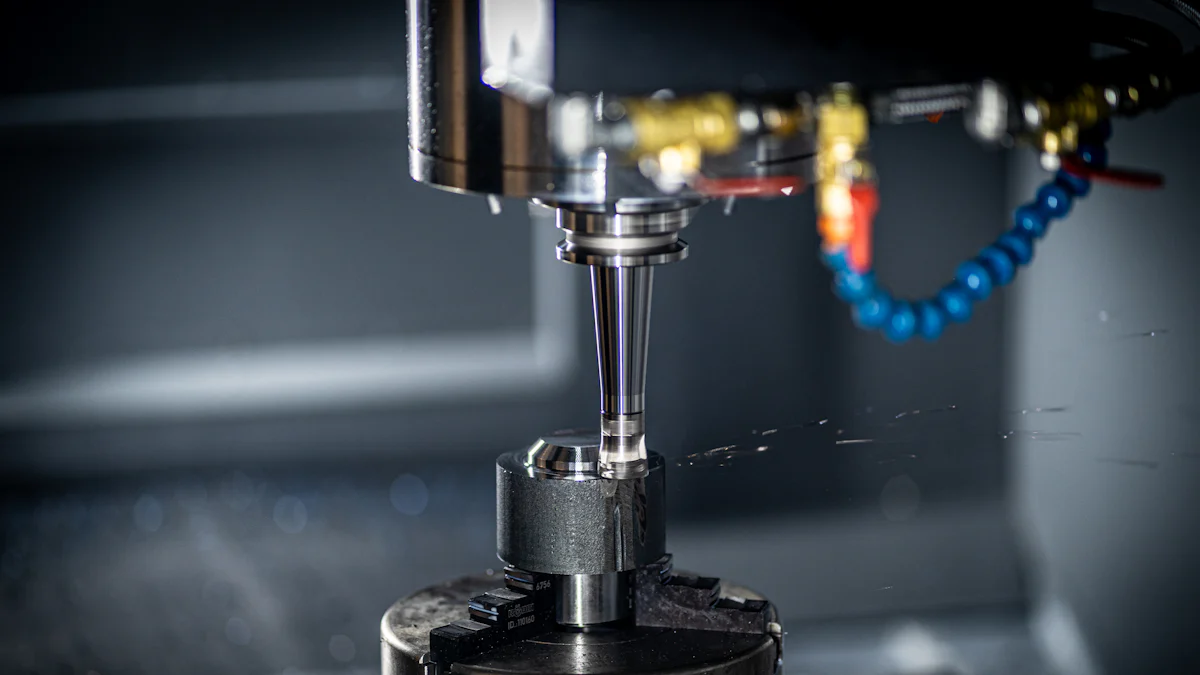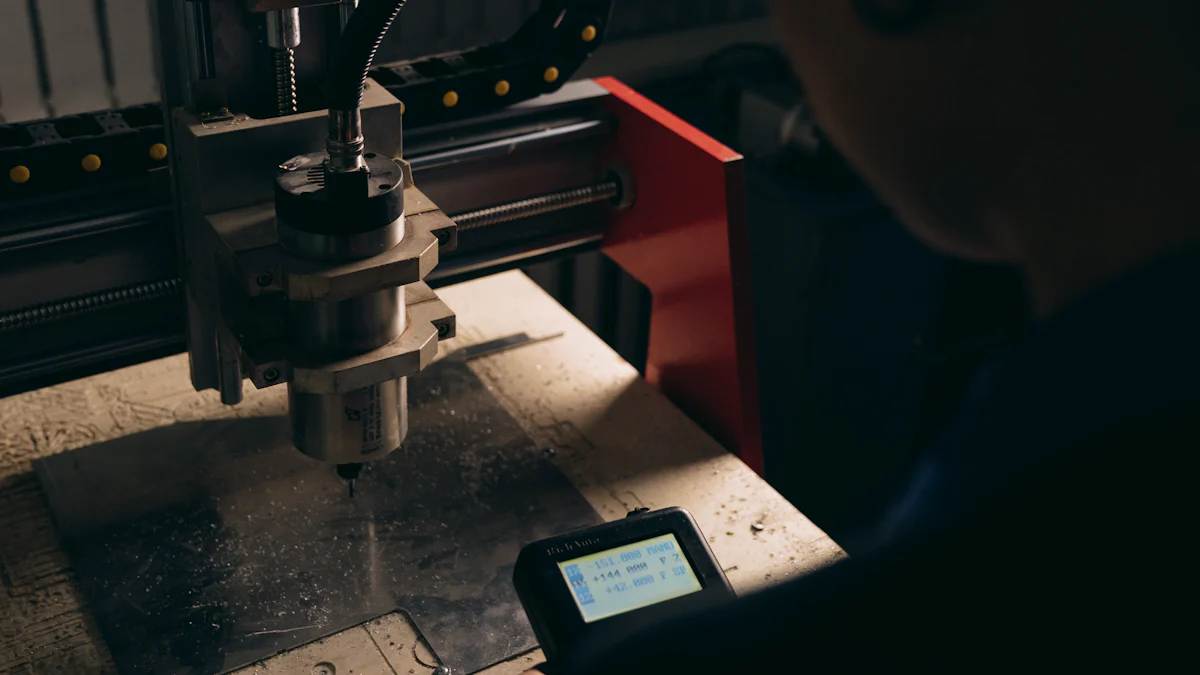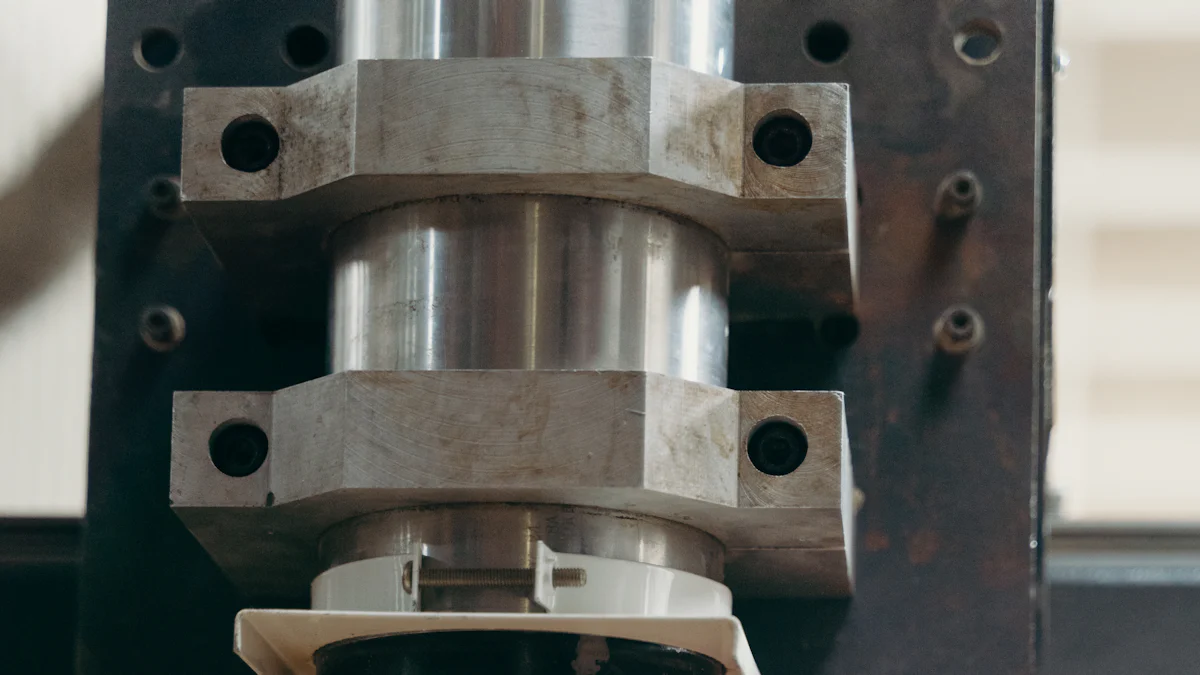How to Use a Cuttlebug Die Cutting Machine

The Cuttlebug is a fantastic tool for anyone who loves crafting, especially when learning how to use a Cuttlebug die cutting machine. It’s a manual die cutting and embossing machine that helps you create stunning designs for projects like cards, scrapbooks, and decorations. You’ll love its portability, making it easy to take to crafting events or move around your workspace. This machine works with various materials, from paper to thin metal sheets, giving you endless creative possibilities. Plus, it’s versatile enough to use dies and embossing folders from other brands, which makes it a favorite among crafters. With the Cuttlebug, intricate designs become effortless.
Key Takeaways
- The Cuttlebug is a versatile manual die cutting and embossing machine, perfect for crafting projects like cards and scrapbooks.
- Gather essential tools, including the Cuttlebug machine, cutting plates, and compatible dies or embossing folders, to ensure a smooth crafting experience.
- For best results, properly set up your machine by securing it on a flat surface and understanding the 'sandwich' system for cutting and embossing.
- For best results, align materials and dies carefully, and consider using shims for intricate designs to ensure clean cuts.
- Regular maintenance, including cleaning plates and inspecting for wear, is crucial for the longevity and performance of your Cuttlebug.
- Experiment with various materials, such as paper, fabric, and thin metal sheets, to unlock endless creative possibilities.
- Always refer to the manufacturer's instructions for compatibility and setup to avoid damaging your machine or tools.
What You Need to Get Started
Before diving into crafting with your Cuttlebug, it’s essential to gather the right tools and materials. Having everything ready will make the process smoother and more enjoyable. Let’s break down what you’ll need. get started
Essential Tools and Materials
The Cuttlebug Machine
The star of the show is, of course, the Cuttlebug machine. This compact, hand-cranked device is designed to cut and emboss with ease. Its portability makes it perfect for crafting on the go or at home. You’ll appreciate how simple it is to set up and use, even if you’re new to die cutting.
Cutting Plates (A, B, and C Plates)
The Cuttlebug uses a set of cutting plates to create what’s called a “sandwich.” These plates include:
- A Plate: The thick spacer plate that forms the base of your sandwich.
- B Plates: Two thinner plates used for cutting and embossing.
- C Plate: A sturdier plate for cutting thicker materials or using specialty dies.
These plates work together to apply the right amount of pressure for clean cuts and crisp embossing. Always check your project instructions to ensure you’re using the correct plate combination.
Dies and Embossing Folders
Dies and embossing folders are the tools that bring your designs to life. Dies are metal shapes that cut materials into specific patterns, while embossing folders add texture and dimension. The Cuttlebug is compatible with its own brand of dies and folders, as well as many from other popular brands. This versatility gives you endless creative options.
Materials to Cut
The Cuttlebug can handle a variety of materials, making it a versatile tool for different projects. Some common materials include:
- Paper and Cardstock: Ideal for cards, scrapbook pages, and decorations.
- Fabric and Felt: Great for sewing projects or soft embellishments.
- Thin Metal Sheets: Perfect for creating metallic accents.
- Poster Board and Tissue Paper: Useful for lightweight or layered designs.
Make sure your materials fit within the machine’s size limits for the best results.
Optional Accessories
Specialty Dies and Embossing Folders
If you want to expand your creative possibilities, consider investing in specialty dies and embossing folders. These tools allow you to create intricate designs or unique textures that stand out in your projects.
Adhesive Sheets or Transfer Tape
Adhesive sheets or transfer tape can make assembling your designs much easier. These accessories help you stick delicate or intricate cutouts onto your projects without messy glue.
Replacement Plates
Over time, your cutting plates may show signs of wear. Having replacement plates on hand ensures you can keep crafting without interruptions. Look for official Cuttlebug plates to maintain the best performance.
Pro Tip: To extend the life of your plates, rotate and flip them regularly during use. This prevents warping and ensures even pressure.
By gathering these tools and materials, you’ll be fully prepared to start crafting with your Cuttlebug. Whether you’re cutting paper or embossing fabric, having the right setup makes all the difference.
Step-by-Step Guide to Using the Cuttlebug

Ready to dive into crafting with your Cuttlebug? This step-by-step guide will walk you through everything, from setting up the machine to creating your first project. Let’s get started!
Setting Up the Machine
Unboxing and Assembling the Cuttlebug
When you first unbox your Cuttlebug, you’ll notice its compact design. It might look like a small purse, but don’t let its size fool you—it’s a powerful tool. Start by unfolding the flaps on both sides of the machine. These flaps not only stabilize the machine but also activate the suction mechanism that keeps it firmly in place. No complicated assembly is required, which makes it perfect for beginners.
Pro Tip: Always check the box for all included parts, like the cutting plates and instruction manual, to ensure nothing is missing.
Securing the Machine on a Flat Surface
Place your Cuttlebug on a clean, flat surface. Push down gently on the flaps to engage the suction. This step is crucial because it prevents the machine from moving while you’re cranking the handle. A stable setup ensures smooth operation and precise results.
“When you set it on your table, you fold down the flaps on the front and back of the Cuttlebug to suction to your work surface.” – Crafting Expert
Preparing the Cutting Plates
Understanding the Plate Sandwich System
The Cuttlebug uses a “sandwich” system to cut or emboss materials. Think of it as layering different components to create the right amount of pressure. The basic sandwich includes:
- A Plate: The thick base plate.
- B Plates: Two thinner plates for cutting and embossing.
- C Plate: A sturdier plate for thicker materials or specialty dies.
Each project may require a slightly different combination of plates, so always refer to the instructions for your specific die or embossing folder.
Arranging the Plates, Die, and Material
Start by placing the A Plate at the bottom. Next, add one B Plate on top of it. Lay your material (like cardstock or fabric) on the B Plate, then position your die or embossing folder over the material. Finally, top it off with another B Plate or the C Plate, depending on your project. This layered setup ensures even pressure for clean cuts or crisp embossing.
Pro Tip: Align your material and die carefully to avoid uneven cuts. For intricate designs, consider using a shim (a thin piece of cardstock) to increase pressure.
Operating the Machine
Inserting the Plate Sandwich into the Machine
Once your sandwich is ready, slide it into the opening of the Cuttlebug. Hold the sandwich steady with one hand while you prepare to turn the handle. The machine’s design ensures the plates stay aligned as they pass through.
Turning the Handle to Feed the Plates Through
Turn the handle in a smooth, steady motion. You’ll feel some resistance as the plates move through the rollers, which is normal. The pressure applied by the rollers cuts or embosses your material with precision. Keep turning until the entire sandwich exits the other side.
“Embossing with the Cuttlebug is very straightforward.” – Crafting Enthusiast
Removing and Inspecting the Cut Material
Carefully separate the plates to reveal your finished piece. Inspect the material to ensure the cut or embossing is clean and complete. If you notice any issues, you can adjust the sandwich setup and run it through the machine again.
Pro Tip: For delicate materials like tissue paper, use a piece of scrap cardstock as a backing to prevent tearing.
By following these steps, you’ll master how to use a Cuttlebug die cutting machine in no time. Whether you’re cutting intricate shapes or adding texture to your projects, this process ensures professional-looking results every time.
Tips for Best Results
Aligning Materials and Dies Properly
Getting clean cuts and precise embossing starts with proper alignment. Place your material flat on the cutting plate, ensuring there are no wrinkles or folds. Position the die or embossing folder carefully over the material. For dies, make sure the cutting edge faces down toward the material. If you're working with an intricate design, take a moment to double-check the placement before running it through the machine.
Pro Tip: Use a small piece of washi tape to hold your die or material in place. This prevents shifting during the cutting process and ensures perfect results every time.
Proper alignment not only improves the quality of your cuts but also extends the life of your dies and plates. Misaligned materials can cause uneven pressure, which may damage your tools over time.
Using Shims for Intricate Cuts
Intricate designs often require a little extra pressure to cut cleanly. This is where shims come in handy. A shim is simply a thin piece of cardstock or paper that you add to your plate sandwich. It increases the pressure slightly, helping the die cut through every detail of your material.
To use a shim, place it between the cutting plate and the material. Test the setup by running it through the machine. If the cut isn’t clean, try adding another layer of cardstock. Be cautious not to overdo it, as too much pressure can strain the machine.
“You can cut and emboss a variety of materials with the Cuttlebug, including cardstock, tissue paper, and foils.” – Crafting Enthusiast
Shims are especially useful when working with thicker materials like fabric or thin metal sheets. They ensure that even the most intricate designs come out crisp and complete.
Cleaning the Plates and Dies After Use
Keeping your plates and dies clean is essential for maintaining the performance of your Cuttlebug. After each use, inspect the plates for any leftover scraps or adhesive residue. Wipe them down with a soft, damp cloth to remove debris. For stubborn residue, use a mild soap and water solution, but make sure to dry the plates thoroughly before storing them.
Dies can also collect small bits of material, especially after cutting intricate designs. Use a die pick or a soft brush to gently remove these pieces. Avoid using sharp objects, as they can damage the die.
Pro Tip: Rotate and flip your plates regularly to prevent warping. This simple habit keeps the plates flat and ensures even pressure during cutting and embossing.
Proper cleaning not only keeps your tools in top condition but also prevents unwanted marks or impressions on future projects. A little maintenance goes a long way in ensuring your Cuttlebug delivers consistent, high-quality results.
By following these tips, you'll master how to use a Cuttlebug die cutting machine like a pro. Whether you're creating simple shapes or intricate patterns, these best practices will help you achieve flawless results every time.
Materials You Can Cut with the Cuttlebug

One of the most exciting aspects of the Cuttlebug is its ability to work with a variety of materials. Whether you're crafting cards, sewing embellishments, or creating metallic accents, this machine opens up endless possibilities. Let’s explore the materials you can cut and how to get the best results.
Paper and Cardstock
Recommended Thickness and Types
Paper and cardstock are the most common materials used with the Cuttlebug. For optimal results, stick to paper that isn’t too thin or flimsy. Standard printer paper works well for simple designs, but for more intricate cuts, opt for heavier cardstock. Cardstock with a thickness of 65-110 lb is ideal. It provides enough sturdiness to hold detailed cuts without tearing.
If you’re feeling adventurous, try specialty papers like glitter cardstock or vellum. These add unique textures and finishes to your projects. However, keep in mind that thicker or textured papers may require additional pressure for clean cuts.
Tips for Clean Cuts
To achieve clean cuts, always ensure your paper lies flat on the cutting plate. Wrinkles or folds can lead to uneven results. Position your die carefully, with the cutting edge facing down toward the paper. If you’re working with intricate designs, consider using a shim to increase pressure.
Pro Tip: Run the sandwich through the machine twice—forward and backward—for a deeper, crisper cut. This technique works especially well for embossing folders.
Fabric and Felt
Preparing Fabric for Cutting
Fabric and felt bring a whole new dimension to your crafting projects. Before cutting, prepare your fabric by ironing it to remove wrinkles. For thinner fabrics, attach an adhesive backing or stabilizer to prevent fraying and ensure clean edges. Felt, being thicker, usually doesn’t require additional preparation.
Choose high-quality felt or tightly woven fabrics for the best results. Loose or stretchy materials may not cut as cleanly and could require extra adjustments.
Best Practices for Intricate Designs
When working with intricate designs, take your time to align the fabric and die properly. Use a shim if needed to apply extra pressure. For delicate fabrics, place a piece of cardstock underneath as a backing. This helps the die cut through the material without tearing or shifting.
“You can cut and emboss a variety of materials with the Cuttlebug, including cardstock, tissue paper, and foils.” – Anonymous Contributor
Experiment with different fabrics to create unique embellishments for sewing projects, home décor, or even wearable art.
Thin Metal Sheets and Other Materials
Using Specialty Dies for Metal
Thin metal sheets add a stunning metallic touch to your crafts. To cut metal, use specialty dies designed for harder materials. These dies are sturdier and can handle the extra pressure required to cut through metal. Place the metal sheet between the plates as you would with paper, ensuring it’s flat and aligned.
For embossing metal, use embossing folders to create raised patterns. The results are striking and perfect for cards, tags, or decorative accents.
Safety Tips for Cutting Harder Materials
When cutting harder materials like metal, safety should be your priority. Always handle the edges of the metal sheet carefully, as they can be sharp. Avoid forcing the sandwich through the machine if you feel excessive resistance. Instead, adjust the setup by adding or removing shims to find the right pressure.
Pro Tip: Use gloves when handling thin metal sheets to protect your hands from sharp edges.
The Cuttlebug’s versatility makes it a fantastic tool for experimenting with different materials. Whether you’re cutting paper, fabric, or metal, this machine delivers precise and professional results. By understanding how to use a Cuttlebug die cutting machine with various materials, you’ll unlock endless creative opportunities.
Maintenance and Troubleshooting Tips
Keeping your Cuttlebug in top shape ensures it delivers consistent results for years. Regular maintenance and knowing how to troubleshoot common issues will save you time and frustration. Let’s dive into some practical tips.
Cleaning and Storing the Machine
Wiping Down the Machine After Use
After every crafting session, take a moment to clean your Cuttlebug. Dust, paper scraps, and adhesive residue can accumulate on the machine. Use a soft, damp cloth to wipe down the exterior and remove any debris. For stubborn spots, a mild soap solution works well. Avoid using harsh chemicals, as they may damage the surface.
Pro Tip: Pay extra attention to the rollers. If adhesive or material residue builds up, it can affect the machine’s performance. A quick wipe keeps everything running smoothly.
Storing Plates to Prevent Warping
Proper storage of your cutting plates is crucial. Warped plates can lead to uneven cuts and embossing. Always store them flat in a cool, dry place. Avoid stacking heavy objects on top of the plates, as this can cause bending over time.
To extend their lifespan, rotate and flip the plates regularly during use. This distributes pressure evenly and minimizes wear. If you notice slight warping, try placing the plate under a heavy book for a few days to flatten it out.
“The Cuttlebug’s compact design makes it easy to store, but taking care of the plates ensures long-term reliability.” – Crafting Enthusiast
Replacing Worn-Out Plates
Signs That Plates Need Replacement
Over time, your cutting plates will show signs of wear. Scratches, cracks, and deep impressions are normal after repeated use. However, if you notice that cuts are no longer clean or the plates feel uneven, it’s time for a replacement. Warped plates that don’t sit flat can also affect the quality of your projects.
Pro Tip: Keep an eye on the clarity of your plates. When they become too cloudy to see through, it might be a good idea to replace them.
Where to Purchase Replacement Plates
You can find replacement plates at most craft stores or online retailers. Look for official Cuttlebug plates to ensure compatibility and quality. Many crafters recommend buying an extra set of plates when you first purchase your machine. This way, you’ll always have a backup ready.
Quick Tip: Check for bundle deals or discounts when purchasing replacement plates. Some retailers offer sets that include all the plates you need.
Troubleshooting Common Issues
Uneven Cuts or Embossing
Uneven results can be frustrating, but they’re often easy to fix. Start by checking your plate sandwich. Misaligned materials or incorrect plate combinations can cause uneven pressure. Adjust the setup and try again. For intricate designs, adding a shim (a thin piece of cardstock) can help apply extra pressure where needed.
If the issue persists, inspect your plates for warping. Replace them if necessary. Also, ensure the material you’re using is within the machine’s thickness limits. Materials that are too thick may not cut or emboss evenly.
Difficulty Feeding Plates Through the Machine
If you’re struggling to feed the plate sandwich through the machine, don’t force it. Forcing can damage the rollers or plates. Instead, double-check the sandwich setup. Too many layers or an incorrect combination of plates can create excessive resistance. Remove a layer or adjust the plates to reduce thickness.
Pro Tip: Always refer to the instructions for your specific die or embossing folder. Each project may require a slightly different setup.
Machine Handle Not Turning Smoothly
A stiff or stuck handle can disrupt your crafting flow. This issue often occurs when debris builds up in the rollers. Clean the rollers with a soft cloth to remove any residue. If the handle still doesn’t turn smoothly, check the plate sandwich. Excessive thickness can strain the machine. Adjust the setup and try again.
For persistent issues, consider applying a small amount of lubricant to the handle mechanism. Use a lubricant recommended for crafting tools to avoid damaging the machine.
“The Cuttlebug’s manual design makes it reliable, but regular maintenance ensures it stays in perfect working condition.” – Crafting Expert
By following these maintenance and troubleshooting tips, you’ll keep your Cuttlebug running like new. A little care goes a long way in ensuring smooth operation and flawless results. Happy crafting!
Using the Cuttlebug die cutting machine opens up a world of creative possibilities. You can craft intricate designs with ease, whether you're making cards, scrapbook pages, or unique decorations. By following this guide, you’ll confidently set up, operate, and maintain your machine for long-lasting use. Don’t hesitate to experiment with different materials and techniques. Each project is an opportunity to explore your creativity and enjoy the crafting process. So, grab your Cuttlebug, gather your supplies, and start creating something amazing today!
FAQ
What is a Cuttlebug, and how does it work?
The Cuttlebug is a manual die cutting and embossing machine. It uses a hand-cranked mechanism to apply pressure on dies and embossing folders, cutting or embossing materials like paper, fabric, and thin metal sheets. By layering materials and plates into a "sandwich," you can create precise cuts and intricate designs effortlessly.
Fun Fact: The Cuttlebug’s portability and ease of use make it a favorite for crafting on the go!
Can I use dies and embossing folders from other brands?
Yes, the Cuttlebug is compatible with many dies and embossing folders from other brands.
Pro Tip: Always check the manufacturer’s instructions for compatibility to avoid damaging your machine or tools.
What materials can I cut with the Cuttlebug?
The Cuttlebug can cut a variety of materials, including:
- Paper and Cardstock: Perfect for cards, scrapbooks, and decorations.
- Fabric and Felt: Great for sewing projects or soft embellishments.
- Thin Metal Sheets: Ideal for metallic accents.
- Poster Board and Tissue Paper: Useful for lightweight or layered designs.
For best results, ensure your materials fit within the machine’s size and thickness guidelines.
How do I prevent my cutting plates from warping?
To prevent warping, rotate and flip your cutting plates regularly during use. Store them flat in a cool, dry place, and avoid stacking heavy objects on top. If slight warping occurs, place the plate under a heavy book for a few days to flatten it.
Quick Tip: Using proper plate combinations and avoiding excessive pressure also helps extend the life of your plates.
Do I need to replace the cutting plates often?
Cutting plates will wear out over time, especially with frequent use. Look for signs like deep scratches, cracks, or uneven surfaces. When cuts become inconsistent or plates no longer sit flat, it’s time for a replacement. You can find official Cuttlebug plates at craft stores or online.
Can the Cuttlebug emboss as well as cut?
Absolutely! The Cuttlebug excels at both cutting and embossing. Use embossing folders to add texture and dimension to your projects. Whether you’re working with paper, cardstock, or even thin metal sheets, embossing creates stunning raised patterns.
Did You Know? The Cuttlebug’s rolling technology ensures crisp embossing results every time.
Is the Cuttlebug suitable for beginners?
Yes, the Cuttlebug is beginner-friendly. Its simple design and manual operation make it easy to learn. You don’t need any prior experience to start crafting with it. The machine comes with clear instructions, and the setup process is straightforward.
Pro Tip: Start with basic dies and materials to get comfortable before experimenting with intricate designs.
How portable is the Cuttlebug?
The Cuttlebug is highly portable. Its compact size and lightweight design make it easy to carry to crafting events or store in small spaces. The hand-cranked mechanism means you don’t need electricity, so you can use it anywhere.
“My sweet little mint-colored Cuttlebug fits perfectly in my bag for crafting on the go!” – Crafting Enthusiast
What should I do if my cuts aren’t clean?
If your cuts aren’t clean, check the following:
- Ensure proper alignment of the material and die.
- Use a shim (a thin piece of cardstock) to increase pressure for intricate designs.
- Inspect your cutting plates for warping or wear and replace them if needed.
Running the plate sandwich through the machine twice—forward and backward—can also improve results.
How do I maintain my Cuttlebug?
To keep your Cuttlebug in top shape:
- Wipe it down after each use to remove dust and debris.
- Clean the rollers with a soft cloth to prevent residue buildup.
- Store it in a cool, dry place to avoid damage.
Regular maintenance ensures smooth operation and extends the machine’s lifespan.
Pro Tip: Proper care of your plates and dies also contributes to consistent, high-quality results.
These FAQs should help you get the most out of your Cuttlebug. If you’re ready to dive into crafting, grab your machine and start creating something amazing!
See Also
Mastering The Use Of A Die Cutting Machine
A Beginner's Guide To Using A Die Cutting Machine
Utilizing Die Cuts Without The Need For A Machine
